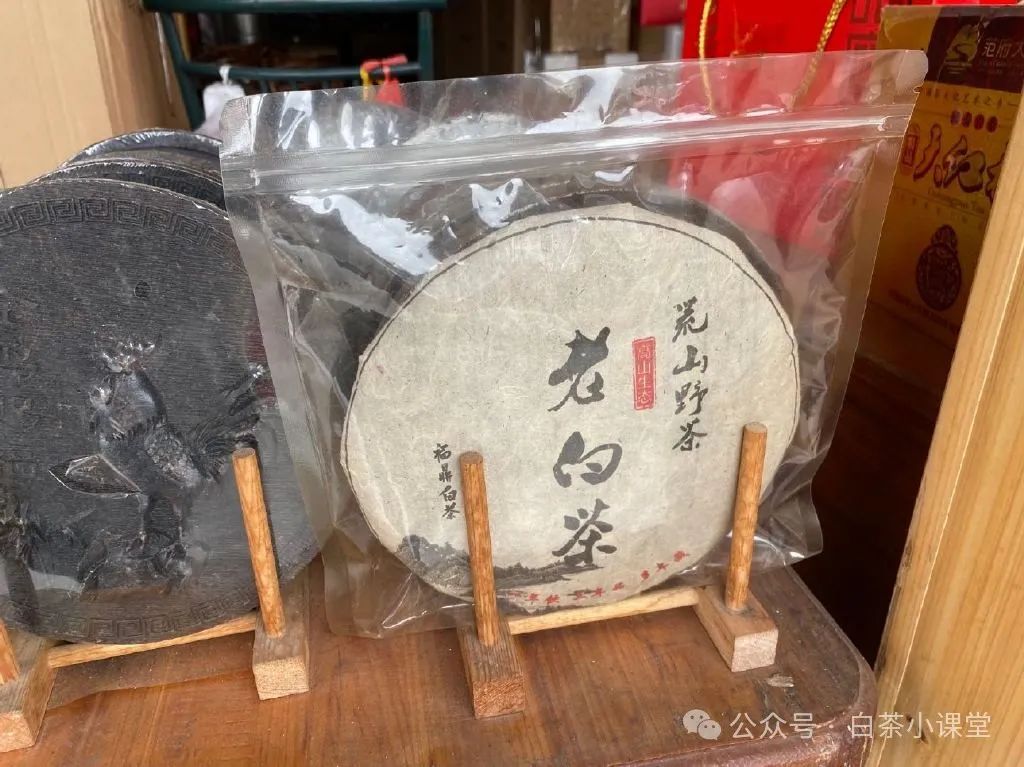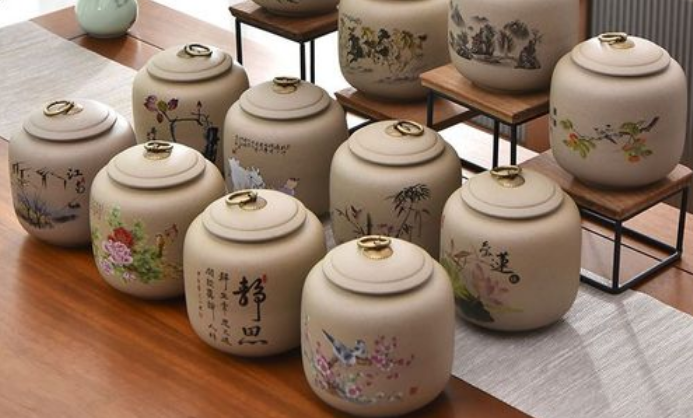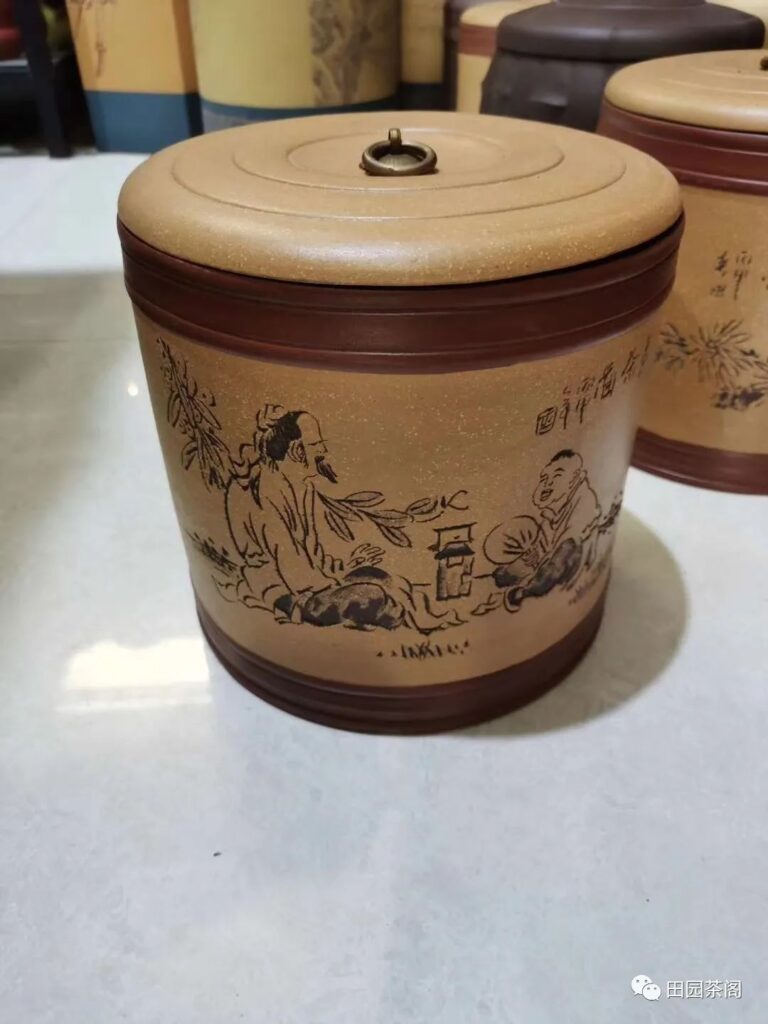Last night, upon returning home from work, I discovered my former neighbor, Aunt Zhang, sitting in the living room, engaged in a cheerful conversation with my mother. They seemed to be immersed in an interesting topic, their faces filled with laughter, and they didn’t notice someone passing by for a moment. After exchanging a few pleasantries, Aunt Zhang suddenly seemed to remember something and changed the subject, mentioning an interesting occurrence.
Yesterday, while dining out, she tasted a white tea that had a different flavor from what she usually drinks. Curious about the origin of the tea, she inquired. The shopkeeper, a warm-hearted farmer, explained that it was tea they had sun-dried themselves, usually reserved for their own consumption and not for sale. Seeing Aunt Zhang’s interest, the shopkeeper generously filled a plastic bag with tea for her before she left. Now, this bag of tea is temporarily resting in the car’s trunk storage compartment, and it’s uncertain whether its quality is good or bad. Is it okay to store it directly in the cabinet in its original bag? In the tea community, there have always been many advocates for farmer’s tea. Some tea enthusiasts even go out of their way to buy hand-sun tea from farmers every year, firmly believing in its more authentic flavor. However, tea making is, after all, a technical process. If the tea-making method is rough, the water content may not meet standards, and the quality is hard to guarantee. As for storing tea, I can offer some advice. Regardless of the tea’s quality, using a plastic bag as a storage container is akin to leaving it to chance!Direct exposure to light is a major culprit in tea spoilage. White tea, with its simplified processing, particularly values the effects of the withering step. During this stage, gentle sunlight and wind, along with the skill of thin spreading and airing, allow the fresh leaves to lose water orderly, promoting the transformation of intrinsic flavor substances. Standard sun withering can make white tea of higher quality, with clearer tea aroma and more abundant freshness.
Given this, why is it always emphasized that finished tea should be stored away from light? Not only tea, but also kitchen oils and wooden cabinets in the living room will undergo varying degrees of spoilage and aging under prolonged light exposure. The main culprit is the destructive effect of ultraviolet and infrared rays. In addition to natural sunlight, the often-overlooked factor is the indoor lights that are left on for extended periods. Sun withering places great emphasis on the word ‘gentle’ because exposing tea to harsh sunlight for just two or three days can lead to significant loss of its essence. Moreover, finished tea has completed the necessary production processes and does not require additional sun exposure. Continuous exposure to light day after day can cause deep damage to tea within half a year. Especially the natural pigment substances in tea leaves, mainly chlorophyll, are highly susceptible to decomposition under light conditions, leading to dull tea color.As we all know, for a sunshade umbrella to play its sunscreen role, it must rely on a professional coating. A transparent umbrella has no protective effect. Similarly, when tea in a plastic bag is directly exposed to light and undergoes oxidation, flavor substances such as theanine and aromatic substances will be greatly damaged. Moreover, plastic bags will also be affected under long-term illumination and emit the smell of the plastic itself.
Even if an ordinary person can’t smell it, tea has extremely strong adsorption properties, and its original natural aroma will soon weaken or even be covered up. It’s really a pity that a tea has not been drunk several times but has deteriorated and absorbed strange odors due to improper storage! A plastic bag is only a thin layer, and its sealing effect is also not optimistic. For tea packaged in tinplate cans on the market, a food-grade plastic bag is also placed inside to further strengthen the sealing protection. The three-layer packaging method used for long-term storage of white tea also requires the addition of a plastic bag. It can not only isolate external pollution but also keep the tea dry. Some careless tea lovers think that relying on a plastic bag for tea storage is enough. The tea is placed in the cabinet like this, and there is still a possibility of deterioration after a period of time. A transparent plastic bag not only lacks the light-shielding effect but also has insufficient sealing performance, which is a key issue. To illustrate this more intuitively, a small experiment can be done. Find a plastic bag that has never been used, fill it half with water and tie the bag mouth tightly, then hang the whole bag upside down. If the bag mouth is not completely tied tightly, it will be found that water will gradually seep out from the bag mouth. By the same token, if there are tiny gaps in the bag mouth, air, water vapor, etc. will freely enter and exit through these channels, having an adverse effect on the tea. If it happens to be autumn Shoumei with thick tea stalks, the thin plastic bag is more likely to be accidentally punctured, resulting in the tea being contaminated and its quality deteriorating during storage. I believe some tea lovers will jump out to refute when they see this: “These are all low-probability events. You are deliberately causing panic!” However, paying attention to every detail in tea storage is precisely to ensure the quality and safety of the tea and nip various potential problems in the bud. For heavily fermented dark tea that has developed an aged flavor, it can be placed in a tea-awakening pot for ventilation for a while or take advantage of the adsorption function of a purple clay pot to improve the flavor of the tea soup. But for other tea categories, once they lose their pure original flavor, it means they have embarked on the path of deterioration and there is no turning back. Every step needs to be taken with extra caution. Whether it is for short-term storage or long-term collection determines different packaging methods. When bringing the tea home, the packaging should be changed immediately to create a stable and reliable storage environment. If it is intended for daily consumption, a sealed bag made of kraft paper or aluminum foil and a firm and odorless tinplate can are the most convenient storage containers.After each tea retrieval, it is imperative to promptly restore the packaging seal. Ensure that every inch of the bag mouth is tightly pinched, and the can mouth should also be checked for any signs of looseness to prevent the intrusion of air and moisture. Except for green tea and lightly scented Tieguanyin, which require low-temperature preservation, other teas can be stored at room temperature away from light and consumed promptly.
For long-term storage of white tea, simple transparent plastic bags pose significant risks. Even if the quantity is not large, switching to individually sealed triple-layer packaging offers more peace of mind. Replace the original plastic bag with a thicker food-grade plastic bag, and then encase it in an aluminum foil bag. After securely sealing the bag mouths, place them in a sturdy thick cardboard box, and use tape to seal all the gaps, creating a sealed, light-proof, dry, and stable storage environment. If there is no dedicated storage room at home, consider placing the tea on a shelf in the study to avoid the effects of direct sunlight and moisture. If occasional consumption is planned, portioning should be done before sealing the box to avoid frequent opening, which can affect the transformation effect. The amount for one portioning should not be too much; enough to be consumed within a month is sufficient. Otherwise, over time, even with new packaging, there will be no help in enhancing the tea quality, and there is a possibility of flavor degradation. Over the years, I have written countless articles emphasizing the importance of tea storage packaging. However, some netizens always dismiss it as an irrelevant promotional gimmick. ‘Our climate is dry, and we can store tea casually at home, and it still tastes good, so there is no need to be so meticulous!’ As the saying goes: ‘He who walks by the river will sooner or later get his shoes wet. ‘ Every good tea is hard to come by and deserves to be cherished; by the time the problem arises, it will be too late to regret!


